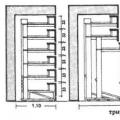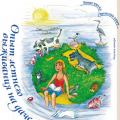Ossetia on the map - what republic is in Russia? South Ossetia on the map Map of villages in South Ossetia.
South Ossetia
South Ossetia is a partially recognized state of Transcaucasia, the territory of which is 3.9 thousand square kilometers and occupies the southern slopes of the Greater Caucasus Range. The map of South Ossetia indicates that the republic does not have its own access to the sea. Western, southern and eastern borders the state shares with Georgia, and in the north it borders with the Republic of North Ossetia-Alania, which is part of Russian Federation. The population of the republic, according to rough estimates, is about 50 thousand people.The detailed map of South Ossetia shows the administrative-territorial division of the republic, which consists of four districts (Dzau, Leningor, Znaur, Tskhinvali), as well as the city of Tskhinvali.
Interactive map South Ossetia contains information about the location of the South Ossetian capital, Tskhinvali. The city is located on the southern slopes of the Caucasus, on the river. Bolshaya Liakhva, at an altitude of 870 m above sea level. The population of the capital of the republic is about 35 thousand people. In addition to Tskhinvali, only Kvaisa has the status of a city - a settlement with a population of 2,400 people, which occupies the northern slopes of the Rachinsky ridge, located in the Kudar gorge, on the left bank of the river. Jojora.
In general, on the territory of the republic there are 46 settlements that have the status of villages, which are indicated by a detailed map of South Ossetia.
South Ossetia is now a self-proclaimed republic, which is generally recognized by only a few states, including Russia. South Ossetia is located, as you can easily guess from the name, the main one south of Ossetia. They are separated by the Caucasus Range, which occupies most of the territory of South Ossetia. 89% of the territory is made up of stone cliffs.
South Ossetia on an interactive map
The main transport artery is the Trans-Caucasian Highway, which runs from Russia and through the territory of Georgia to Armenia. There is also Railway, however, it comes from Georgia and is now blocked. There are no airfields; among air transport, only helicopters have the ability to transport people and cargo.
Nevertheless, for this piece of land, with a population of barely one hundred thousand people (according to estimates in 1990), heated battles do not subside. The ethnic majority of Ossetians were mixed with Georgians and made up about 70% of the population. Since then, a lot of water has passed under the bridge and many refugees have fled to North Ossetia and Georgia. About 70% of Ossetians and 80% of Georgians left these places, even before 2008. Therefore, now the population is barely 70 thousand people. Calculate the decline for yourself over 20 years, taking into account the fact that in general the population of nations is growing.
Georgia declared a blockade on South Ossetia and now its currency is the Russian ruble, in turn, it gravitates towards Russia, they even teach Russian as a language of national importance. During the blockade, the gas pipeline from Georgia was disconnected in 2008, but already next year from Russia they conducted a separate gas supply to South Ossetia at prices three times lower than Georgian prices.
_________________________________________________________________________
If you need legal assistance in Kolomna, then you should know that a lawyer in Lukhovitsy will be able to provide you with this service, as well as provide free legal advice on real estate issues.
Map of South Ossetia
South Ossetia is now a self-proclaimed republic, which is generally recognized by only a few states, including Russia. South Ossetia is located, as you can easily guess from the name, the main one south of Ossetia. They are separated by the Caucasus Range, which occupies most of the territory of South Ossetia. 89% of the territory is made up of stone cliffs.
South Ossetia on an interactive map
The main transport artery is the Trans-Caucasian Highway, which runs from Russia and through the territory of Georgia to Armenia. There is also a railway, but it comes from Georgia and is now blocked. There are no airfields; among air transport, only helicopters have the ability to transport people and cargo.
Map of South Ossetia

Nevertheless, for this piece of land, with a population of barely one hundred thousand people (according to estimates in 1990), heated battles do not subside. The ethnic majority of Ossetians were mixed with Georgians and made up about 70% of the population. Since then, a lot of water has passed under the bridge and many refugees have fled to North Ossetia and Georgia. About 70% of Ossetians and 80% of Georgians left these places, even before 2008. Therefore, now the population is barely 70 thousand people. Calculate the decline for yourself over 20 years, taking into account the fact that in general the population of nations is growing.
South Ossetia

Georgia declared a blockade on South Ossetia and now its currency is the Russian ruble, in turn, it gravitates towards Russia, they even teach Russian as a language of national importance. During the blockade, the gas pipeline from Georgia was disconnected in 2008, but the very next year a separate one was installed from Russia and supplied gas to South Ossetia at prices three times lower than Georgian prices.
_________________________________________________________________________
If you need legal assistance in Kolomna, then you should know that a lawyer in Lukhovitsy will be able to provide you with this service, as well as provide free legal advice on real estate issues.
South Ossetia is a state in Transcaucasia with the capital Tskhinvali, which has a controversial international legal status. The independence of the republic was recognized by Russia and four other states that are members of the UN in 2008-2011.
South Ossetia on the world map
South Ossetia is a small state with an area of approximately 3900 square meters. km and a length of 79 km from north to south. Its territory is dominated by mountainous terrain. The highest point of the republic is Mount Halatsa. The height of the peak covered with eternal snow is 3938 meters. On the Celtic Plateau, at an altitude of 2925 meters, is the largest lake in South Ossetia, covered with ice most of the year. It is called Kelistba and is the source of the Ksani River. In the Kudar Gorge there is a unique karst lake called Ertso. Once every 5–6 years, the largest of the karst natural reservoirs of the Caucasus presents a surprise: water disappears from the lake bowl. According to researchers, water flows through underground channels into caves. At the top of Mount Tsetelikhati there is a closed system of two lakes with blue, clear, very clean water, connected by a stream. 5 km from the town of Kvaisa there is a picturesque lake Kvedi (Koz), surrounded by dense forests. The largest rivers are the tributaries of the Kura - Bolshaya Liakhva and Ksani. The only protected area is the Liakhvi Nature Reserve, where high-mountain forests grow and rare species of animals live.
Map of South Ossetia in Russian
In this region, protected from the penetration of cold northern winds by the Main Caucasus Range, thermometers show higher temperatures than the average for the Caucasus. In July the average temperature is +20.4, in January - 4.5 degrees above zero. The climate in the mountains differs sharply from the climate in the lowlands.
The Republic of South Ossetia is divided into four districts: Dzauzsky, Znaursky, Leningorsky and Tskhinvalisky. In addition to the capital, which is a separate administrative unit, there is only one city status locality Kvaisa, located in the Kudar Gorge. Kvaisa is separated from the main city of the republic by 60 kilometers. The administrative centers of three districts (Dzau, Leningor and Znaur) have the status of urban-type settlements. The remaining settlements have the status of villages.
The main city of Tskhinvali was seriously damaged in 2008 during a clash between the Georgian and South Ossetian sides. As a result of the bombing, almost all architectural monuments located here before the armed conflict were completely destroyed or damaged. Only the domed church, the Church of the Holy Mother of God, is in satisfactory condition.
The territory of the Republic of North Ossetia-Alania on the map of Russia is small and occupies only 7987 square kilometers. Nearby are located:
- Georgia;
- South Ossetia;
- Chechen Republic;
- Ingushetia;
- Stavropol region.
On satellite map The Republic of North Ossetia-Alania shows that many rivers flow through its territory. The main ones are:
- Terek;
- Urukh;
- Giseldon;
- Ardon;
- Kambileevka.
Also on the territory of the republic there are glaciers that occupy quite a large area. This:
- Miley, its area is 22 square kilometers;
- Tseysky, with an area of 18 square kilometers;
- Karaugomsky. It occupies 35 square kilometers.
The flora is diverse. These are steppes, alpine meadows, broad-leaved, pine and birch forests. Diverse and animal world. The region is home to chamois, aurochs, lynxes, wild boars, roe deer, bears and other animals. There are a large number of birds. The climate is moderate. Summers are long and not dry, and winters are mild.
- The coldest month is January. Temperatures drop to -16 degrees;
- The warmest is July. The air warms up to +24 degrees.
What road routes pass through the Republic of North Ossetia-Alania?
- Federal highway A164 "Transcam". Vladikavkaz – Gori (Georgia);
- Federal highway A162. Vladikavkaz – Alagir;
- P295. Vladikavkaz - Old Lesken;
- P296. Mozdok – Vladikavkaz;
- P217 "Caucasus". Pavlovskaya (Krasnodar region) – Yarag-Kazmalyar (Dagestan);
- Federal highway A161. (Georgian Military Road). Vladikavkaz – border with Georgia.
Other highways have also been laid in the region. On the online map of the Republic of North Ossetia-Alania with borders, you can also see the Vladikavkaz international airport, located near the city of Beslan. There is also a railway running through the territory of the subject, but it is not currently in operation.
Map of the Republic of North Ossetia-Alania with districts and cities
On the map of the Republic of North Ossetia-Alania with regions it is noted that in this region there is one city of republican significance. This is Vladikavkaz, which is the capital of the region. More than 320 thousand people live here. There are 8 districts in the republic:
- Alagirsky;
- Digorsky;
- Ardonsky;
- Irafsky;
- Pravoberezhny;
- Mozdoksky;
- Kirovsky;
- Suburban.
Over 700 thousand people live on the territory of the republic. More than 460 thousand are Ossetians, about 150 thousand are Russians, almost 28 thousand are Ingush. People of other nationalities also live in the republic. There are more than 25 settlements located on the territory of the subject.
 Catalog of articles about sports and a healthy lifestyle Area for gymnastic equestrian and other competitions
Catalog of articles about sports and a healthy lifestyle Area for gymnastic equestrian and other competitions Summer visits to the dacha stories
Summer visits to the dacha stories The influence of society on a person Classes of people in society
The influence of society on a person Classes of people in society